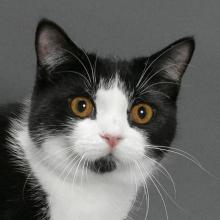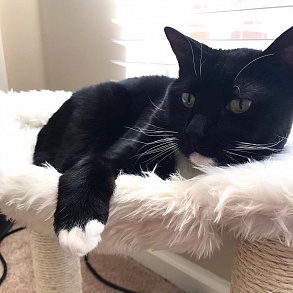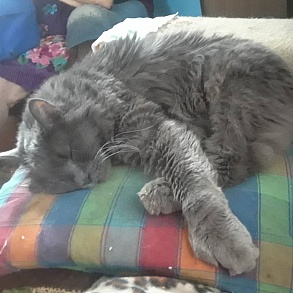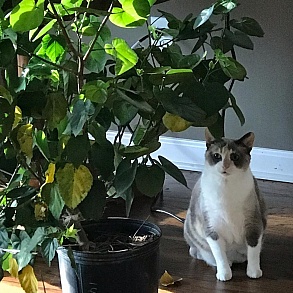Manx

Manx is a breed of domestic cats, a distinctive feature of which is the absence of a tail, although in reality not all representatives of this breed are tailless.
Brief information
- Breed Name: Manx
- Country of Origin: UK
- Weight: 3 – 6 kg
- Life expectancy: 12 – 15 years, sometimes up to 20 years
Manx is a cat breed that originated on the Isle of Man. They are peaceful, intelligent, calm, obedient, unpretentious, adapt quickly to changes, need attention, and if they don't get enough of it, they may be offended. Manx always strives to be at the center of events, of course, in the role of the most active participant. The peculiarity of Manx cats is the absence of a tail, although there are also tailed representatives of the breed, in which its length can vary from a short "stump" to a tail of almost normal length.
Breed characteristics
History
The Manx cat without a tail comes from the island of the same name, two hundred years ago its image was emblazoned on its emblem. The islanders were sure that tailless animals bring good luck, so they surrounded them with love and attention.
Legend has it that the progenitor of the modern Manx was left without a tail during the Great Flood: she ran into the ark at the last minute, and her tail was pinched because the door was already closing.
The breed, which is native to the Isle of Man in the Irish Sea, is naturally established. Isolation on the island and for this reason the lack of new blood flow caused a genetic disorder. The species, based on a dominant mutation that appeared several centuries ago, has common roots with the British shorthair.
Since the end of the XIX century. cats of the Manx breed began to be exhibited. The first exhibition in which they participated was held in 1871. In England, in 1901, a Manx cat lovers club was established. And two years later, the first, albeit unofficial, standard of this breed was published.
In the 30s of the XX century. fluffy tailless beauties expanded the geography of their habitat and appeared in the USA and Scandinavian countries. The breed was registered only after its appearance in America. In Europe, Manx was not recognized due to the fact that the tailless gene is fraught with the health of the cat. But now this breed is recognized by a large number of felinological organizations, and the CFA has combined them into one with the cymric, considering that they differ only in the length of the coat.
Appearance
- Color: any color except color point, chocolate, purple and their combinations with white.
- Coat: smooth, thick, with undercoat.
- Eyes: round, large, set obliquely, preferably to match the color.
- Body: The back of the body is a little heavy.
- Paws: the front ones are shorter than the hind ones.
- Tail: Missing. There is a hole in the place where the tail should be. Also, in addition to tailless, the Manx breed is represented by individuals with several tail vertebrae, cats with a shortened tail and owners of a completely normal, long tail.
Features of behavior
These cats are very peaceful, feel great in a big family, get along with small children, no problems arise when communicating with dogs, even with big ones. Manx is not timid, can stand up for himself and his territory.
Intelligent, calm, obedient cat, unpretentious, adapts quickly to changes. Manx love their owners, they are very loyal, they have sympathy for people in general. They feel like part of the family, they need attention, and if they don't get enough of it, they may be offended.
Love to look at the pouring water, whether it's rain, river or a jet from the tap. Some cats are even able to learn how to flush the toilet to admire the flow of running water.
Despite the fact that the addition of cats is somewhat heavy, they are very energetic, mobile, love games, in addition, excellent hunters and even fishermen.
Health and Care
Manx is a clean animal. But still, this breed can not do without help. It needs to be bathed once a week and combed with a stiff comb, which is especially important during the molting period. Manx claws are razor sharp, they also need regular care.
The taillessness gene can cause bowel and bladder dysfunction, as well as provoke difficulty walking. As a rule, the syndrome manifests itself during the first months of a kitten's life.


